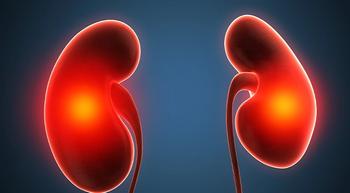
Neoadjuvant Therapy Becoming More Popular in Ovarian Cancer Treatment
Paradigms are shifting in the way that ovarian cancer is being treated.
In patients with ovarian cancer, cytoreduction followed by a platinum-based compound and a taxane agent has been the foremost method of treatment for some time. However, neoadjuvant therapy has recently become more commonly used, says Shana Wingo, M.D., in an interview with CURE’s sister publication, OncLive.
Wingo, a gynecologic oncologist at Arizona Oncology, discussed the treatment landscape in patients with newly diagnosed ovarian cancer, and noted that while neoadjuvant therapy is appropriate for some patients, it is unlikely to alter the role of surgery in the future.
Surgical options for patients with newly diagnosed ovarian cancer have not changed much in recent years, said Wingo. “There are no new data to support any exciting or cutting-edge surgical approaches. As time goes on, more papers are coming out that support what we are already doing.”
However, Wingo notes, there has been a shift in the adoption of minimally invasive surgery, along with increased use of neoadjuvant chemotherapy.
“It is a paradigm shift because we have been so used to upfront debulking. We feel less apprehensive about [bypassing] upfront debulking as the data come out in support of neoadjuvant therapy. It’s a nice shift that hopefully helps patients.”
Wingo noted that, depending on the disease burden and location of the cancer, some patients are better suited for neoadjuvant therapy than others. “There are certain areas where you can’t safely operate, or you know you’re not going to be able to get all of the cancer removed. We will also look at a patient’s comorbidities.”
In patients who can be treated with neoadjuvant therapy, said Wingo, the go-to regimen includes carboplatin and paclitaxel.
It is important to note that the increased use of this kind of pre-surgical therapy does not mean that surgery is no longer a part of managing this disease. According to Wingo, “Surgery and adjuvant therapy or chemotherapy are ‘married.’ They go hand-in-hand. One does not do well without the other.”
Currently, open surgery is the most widely accepted method of surgical treatment, but Wingo said that this is a matter of necessity given the current data.
“It’s still too difficult to see well enough and get all of the cancer out [without an open approach]. There are too many historical data, and even [too many] current data, on upfront chemotherapy that support the use of surgery at some point in the [course of] treatment. I don’t think that will drop off anytime soon.”
But just as the treatment options evolve, so do the surgical options available to patients.
“We have to continue to improve and modify our surgical skills so that we are continuing to get the best outcomes for the patients. We have to continue to learn more and keep our skillset up,” said Wingo.
“I wonder what people would have said about this [with regard to] endometrial cancer 20 years ago. Back then, all the surgeons were doing open cases for endometrial cancer. That has shifted to the point that now, 80 percent to 90 percent of surgeries are minimally invasive. It is possible that the technique in ovarian cancer will be developed and perfected so that we can give patients better recoveries.”





